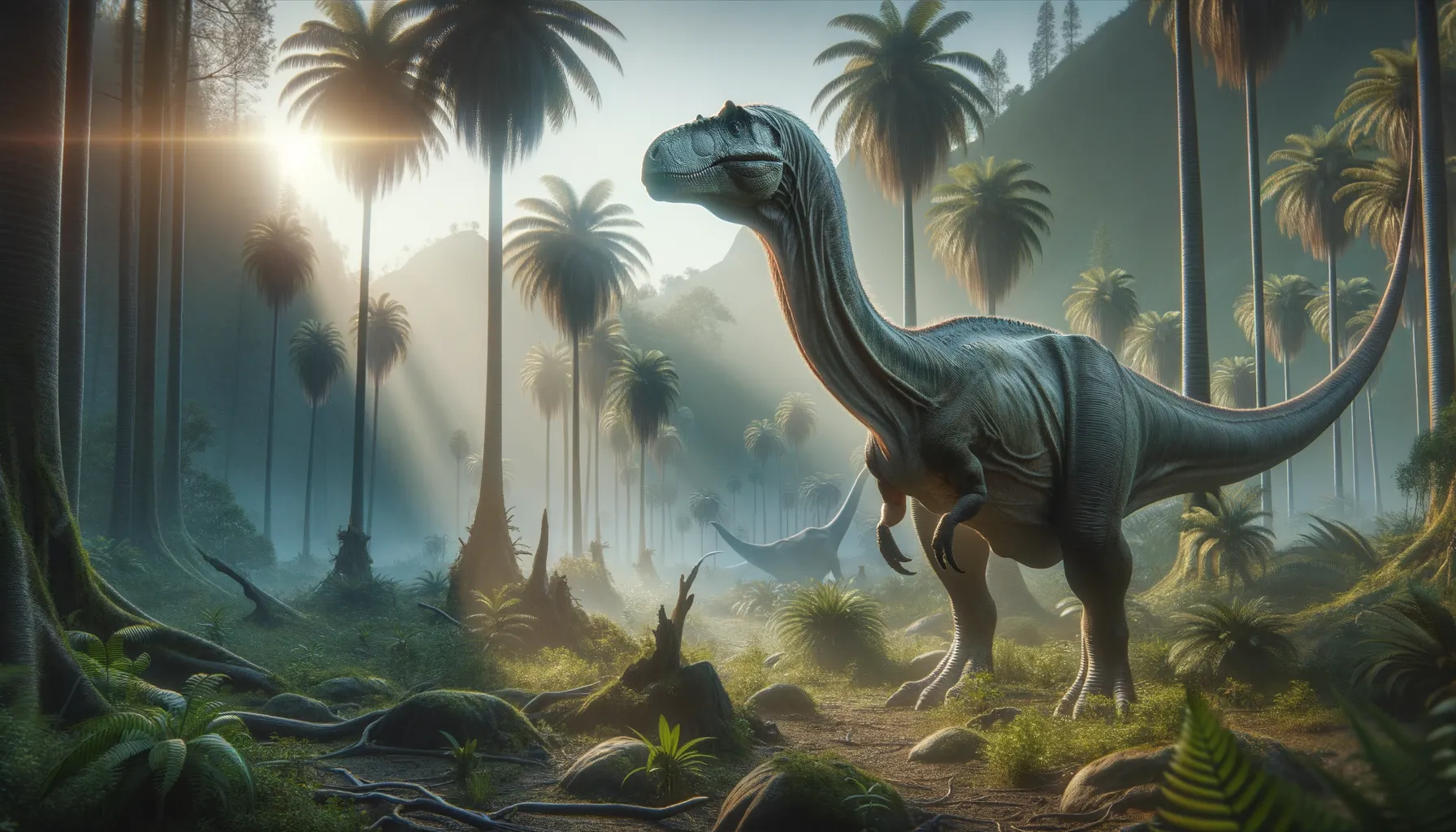
Tanius
Graceful giant of the Cretaceous plains.
Period
Cretaceous
Length
Up to 8 meters long.
Height
Roughly 3 meters at the hip.
Weight
Approximately 3 tons.
Tanius was a medium-sized herbivorous dinosaur that roamed Asia during the Late Cretaceous period. Known for its long, graceful neck and sturdy body, this dinosaur primarily fed on plants. Its remains, primarily found in China, provide important insights into dinosaur biodiversity in the region millions of years ago. Despite its robust build, Tanius was relatively lightweight for its size.
Diet
Tanius was herbivorous, feeding mainly on a variety of plants, including ferns and cycads. Its broad snout and strong jaw muscles enabled it to forage effectively on low-lying vegetation.
Hunting
As a herbivore, Tanius did not hunt other animals. Instead, it likely foraged in groups to find ample food and protect against predators. This social behavior may have helped them avoid the hunting tactics of carnivorous dinosaurs.
Environmental challenges
Living in a lush, tropical environment, Tanius faced challenges like competition for food with other herbivores and climate changes affecting plant availability. Predation from larger theropods posed constant threats, necessitating group living for protection. Seasonal variations could also impact their habitat, influencing migration patterns or changes in their foraging strategy.
Speed
Moderate speed suitable for foraging.
Lifespan
Estimated to be around 70 years.
First discovery
Discovered in 1929 in Shandong, China by Carl Wiman.
Fun Facts
- Tanius was a duck-billed dinosaur that lived around 70 million years ago during the Late Cretaceous period.
- It was discovered in 1929 by the paleontologist Carl Wiman and named after Chinese geologist Tan Xichou.
- Tanius was a herbivore, meaning it fed on plants like conifers, ferns, and possibly flowering plants.
- This dinosaur is estimated to have been about 8 to 9 meters long, making it a fairly large herbivore.
- Tanius fossils have primarily been found in the Gobi Desert of Inner Mongolia, China.
- It had a unique crest on its head, which might have been used for communication or display.
- Despite its size, Tanius might have moved in herds, offering protection from predators.
Growth and Development
Tanius grew from small hatchlings into large, sturdy adults, with growth likely slowed as they reached maturity. Their development may have involved significant parental care during the early stages. Fossil evidence suggests they had rapid growth periods during certain life stages to quickly reach sizes less vulnerable to predators.
Habitat
Tanius inhabited forested regions with abundant vegetation, a crucial resource for its survival. The environment was lush and warm, favoring diverse plant life that supported their herbivorous diet. Water bodies in their habitat provided necessary hydration and possibly protected sites to raise young and avoid predators.
Interaction with other species
Tanius likely coexisted with a variety of other herbivores and carnivores, occupying distinct ecological niches. Their interactions included competing for food with other herbivores and remaining vigilant of predators. Cooperative behaviors may have helped them adapt to changes in their ecosystem.
Natural lifespan
Tanius had an average lifespan of about 70 years.
Reproduction
Tanius reproduced sexually, with evidence suggesting they laid eggs in nests possibly built in secluded areas. There may have been some level of parental care, particularly around nesting sites, to ensure eggs were not predated upon. Hatchlings were likely vulnerable, requiring time to develop size and strength.
Social behaviour
Tanius is believed to have been social, possibly moving in herds for foraging, protection, and mating. Social structures may have been similar to contemporary herbivorous animals, with hierarchies affecting feeding and mating dynamics. Group living also increased their chances of detecting and escaping from predators.
Fossil locations
Fossils of Tanius have primarily been found in the Shandong Province of China, offering crucial insights into the Cretaceous ecosystems of Asia. These locations highlight the geographical distribution of this genus and aid in understanding its ecological role. Ongoing excavations continue to bolster knowledge of its existence and interactions.
